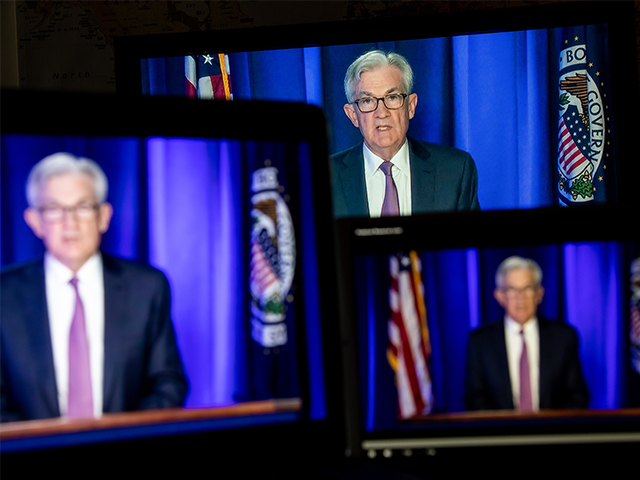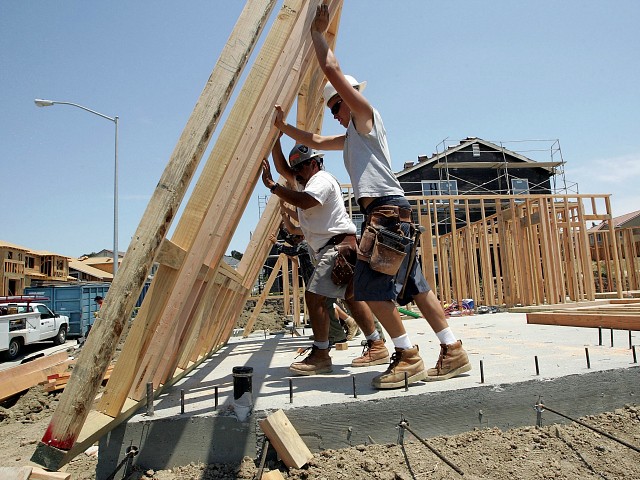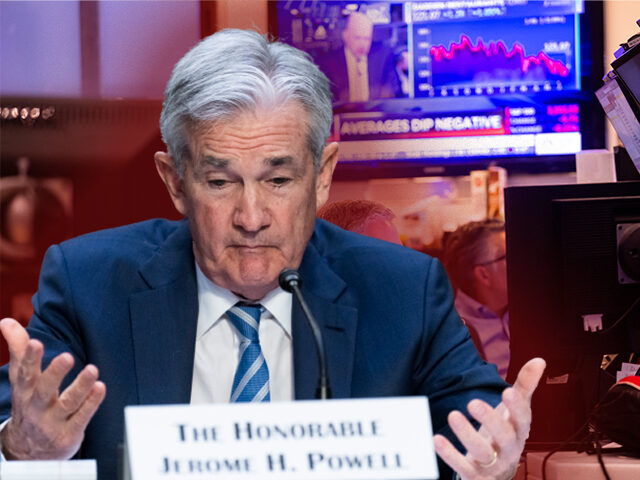After four straight weeks of gains for the stock market, it is time to admit that Jerome Powell has a problem.
Investors appear to be convinced that the Federal Reserve is not really going to tighten monetary policy until it gets inflation down to its two percent target. So the market is not pricing in a deep recession or a long recession but a mild downward dip that will reverse once the Fed backs off from tightening. Investors bidding stocks up do not think they are “fighting the Fed,” they think they’re correctly anticipating a looser monetary policy sometime late next year.
You do not have to take our word for it. The former president of the Federal Reserve Bank of New York announced this view on CNBC’s “Squawk Box” program Monday morning.
“The problem here is that the market doesn’t believe Powell when he says he wants to get inflation back down to two percent. They think basically that if inflation is three percent in the middle of next year and the economy is soft, the Fed will relent,” Dudley said. “I believe Powell means what he says, but it’s going to take time for the market to understand that.”

Federal Reserve Chairman Jerome Powell speaks during a live-streamed news conference in New York on March 16, 2022. (Michael Nagle/Bloomberg via Getty Images)
A big question people have been asking is whether we have finally hit peak inflation. Bank of America’s analysts point out that in inflationary periods going back to 1915, 9.1 percent is the average peak for year-over-year inflation. We hit that in June, so it may not be too far off to say we hit the peak. On the other hand, the average duration for a period of rising inflation is 3.6 years, according to the Bank of America dataset. We’re just over two years in, by the bank’s calculations, which argues that inflation might have a way to go before it peaks.
In any case, we think too much was made of the weaker-than-expected report on the Consumer Price Index (CPI). In the first place, year-over-year CPI only dropped 53-basis points. Second, this was largely driven by the decline in gasoline prices. Third, food prices are still rising at the fastest pace in decades, putting upward pressure on inflation expectations. Finally, one month’s data is not a trend. Powell has said that it will take several months of data indicating inflation has been brought under control for the Fed to relax its vigilance. That strikes us as the correct attitude.
Recession Revival
Eight months of declining homebuilder sentiment, on the other hand, is a trend. The August number fell below the breakeven line for the first time since the spring of 202o. Prior to that, the homebuilder sentiment index had not fallen below 50—the level that marks the difference between a growing market and a contracting one—since 2014, according to the National Association of Home Builders (NAHB).
“Tighter monetary policy from the Federal Reserve and persistently elevated construction costs have brought on a housing recession,” said NAHB chief economist Robert Dietz.
Another way of putting it is that inflation has pushed us into a housing recession. After all, the reason the Fed is tightening is to bring down inflation. And inflation is what has elevated construction costs by driving up both the price of materials and labor.

Construction workers raise wood framing for a new housing development on June 26, 2006, in Richmond, California. (Justin Sullivan/Getty Images)
The New York Fed’s Empire State Manufacturing Survey also fell into recession territory in the first weeks of August. The index of general business conditions saw its second steepest plunge ever and fell to a reading of negative 31.3. Outside of the 2020 pandemic spring, that’s the worst reading since March and February of 2009, when the economy was staggered by the collapse of the financial sector and the implosion of the housing bubble. The index has been negative five out of eight months this year. Salting the wound, the New York Fed said that there is very little optimism among manufacturers for any improvement in conditions over the next six months.
Inflation Reduction Act Silver Lining
Let’s end on a brighter note. The latest survey from the Economist and YouGov shows that the public did not fall for the brazen lie that was the Schumer-Manchin-Biden Inflation Reduction Act. Only 12 percent of Americans think the law will reduce inflation, according to the poll. Twenty-three percent say it will have no effect at all on inflation. Twenty-five percent are not sure. A solid 40 percent plurality believe the law will increase inflation.
We got a chuckle when we looked back on the prior survey and found that it now polls even worse than it did two weeks ago. In a poll taken at the end of July and the beginning of August, only 36 percent of people said the law would increase inflation and 29 percent were not sure. So around four percent of people found out more about the law and concluded that it would do the opposite of what it was advertised to do. The shares of people saying it would decrease inflation or do nothing remained unchanged.

COMMENTS
Please let us know if you're having issues with commenting.